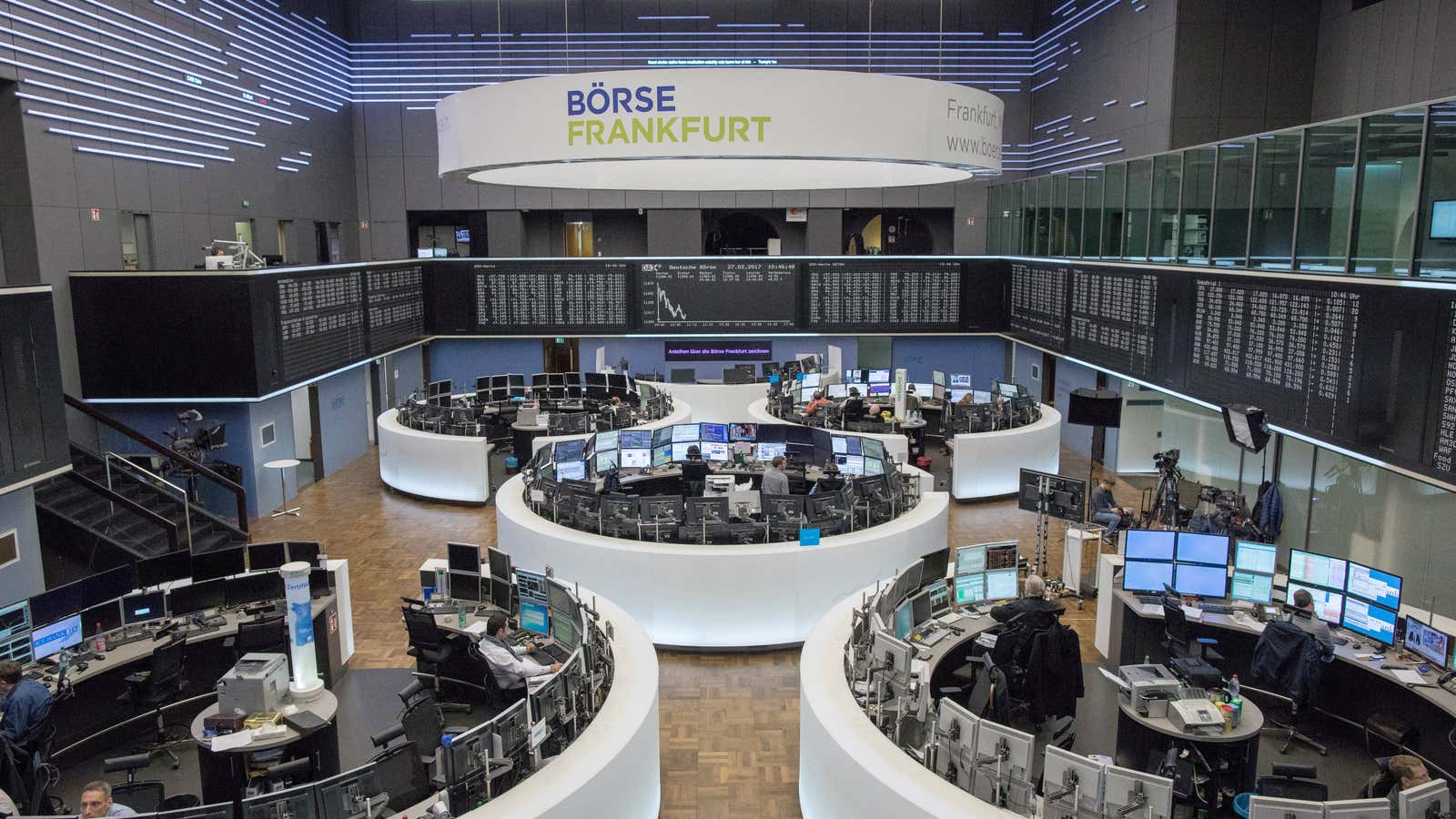Starting today (Jan. 3), Europe’s traders will have to contend with thousands of pages of new rules that will radically change transactions in everything from bonds to stocks to commodities. The sweeping overhaul won’t be obvious for millions of people who don’t work in the industry, at first. But under the surface it will affect everyone.
The regulations are supposed to make European financial markets fairer, more competitive, and less likely to collapse into a crisis. But over time, the rules known as Markets in Financial Instruments Directive II (MiFID II), are likely to make big financial firms even bigger. To comply, brokers have to collect and distribute much more data about their transactions, and asset managers have stricter obligations to make sure they aren’t overpaying for their trade transactions.
Complying with these rules costs money. It has probably already cost banks and asset managers more than $2 billion, and meeting these requirements will eat up a bigger percentage of technology budgets for smaller firms than it will for the big ones, according to IHS Markit. “There’s always a cost to compliance that bigger companies may be able to handle more easily than smaller ones,” said Anish Puaar, an analyst at Rosenblatt Securities.
One way to deal with higher costs is to increase in scale by acquiring smaller, weaker rivals. This may not be entirely a bad thing—continental Europe has more banks relative to the size of its population than the UK, for example (paywall). The European Central Bank has signalled that it expects cross-border mergers and acquisitions to pick up this year and doesn’t appear to be standing in the way of it.
Still, consolidation has mixed benefits. While bigger banks could offer better prices to customers, it doesn’t seem entirely compatible with the EU’s goal to increase competition, which is another way of containing prices for financial services. It can also make the system more brittle: The sheer scale and complexity (they were “too big to fail”) of some financial institutions made the last financial crisis more difficult to manage. The same arguments hold true for asset managers, some of which themselves could eventually become systemically important (too big to fail).
Financial firms may also seek survival through mergers because the new rules could make some services less lucrative. Many of the measures are supposed make buying and selling cheaper for end users—meaning pensions and fund managers and, ultimately, regular people with investment savings.
The rules have changed how brokers charge (paywall) for analyst research and performing trades for their clients, for example—making both services more transparent and perhaps likely less lucrative (it will be easier for investment firms to make sure they’re getting a good deal on research and trading). Far more information about fixed-income transactions will be available to investors, helping them figure out which dealer provides the best prices and potentially to demand cheaper service. Many trades that take place privately between banks and their customers will be pushed onto exchange-type venues.
The person on the street probably won’t notice any difference between the pre and post-MiFID II world. But if it works as intended, he or she could accrue more money on retirement savings through lower transaction costs, which over time can amount to real money. If the system is seen as more stable and fair, that same person could be willing to investor more, making more capital available to businesses, potentially helping them expand and boost employment.
The reality, of course, is likely to be more mixed. The rules will have unintended consequences, some of which may not be helpful for savers, and regulators will likely have to tune some of them. MiFID II after all is a refinement in some ways to what MiFID I started a decade ago. The time might not be far away when bankers and asset managers can start planning for MiFID III.
